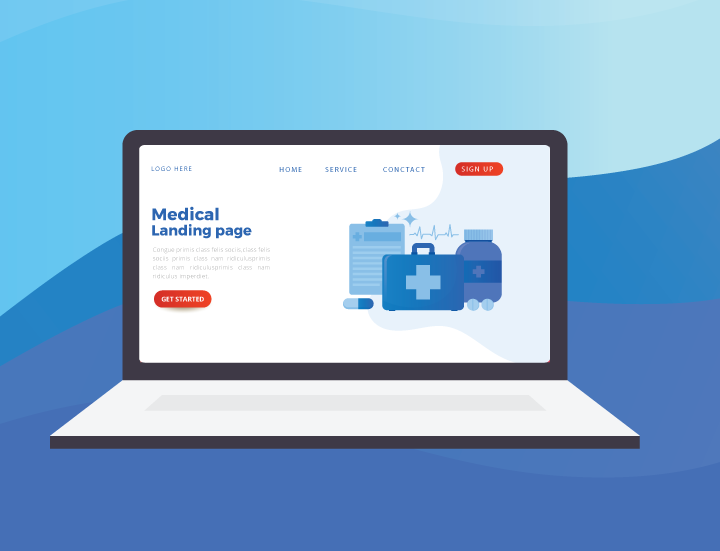Almost every year, technology offers new and new possibilities for each scope of the business. The burst of digital innovation couldn’t bypass the healthcare industry as well. Today’s healthcare businesses tend to adhere to a more personalized approach, shifting the focus from the hospitals and clinics to the patients themselves. Unlike any other industry, healthcare serves a broad audience. As care becomes more centered on the patient, the number of touchpoints is continually increasing. So the healthcare industry should recognize the need for a coordinated approach to managing the relationships with every patient and establishing a reliable and cheerful environment within the services and medical practices and its clients.
What is more, employing various online platforms for the healthcare business is a must today. Even though your medical practice doesn’t imply an online presence, you have to bear in mind that patients are seeking quicker ways of gaining treatment. And within the frames of the harsh modern world, it’s much easier for them to look out for the service they need online before using it. Patients who cannot find you online will likely go to another available platform. That is why it’s crucial to keep your organization at the forefront of modern novelties and always stay relevant, allowing potential customers to become your clients.
Employing various online platforms into your business plan means improving the overall organizational performance. An online presence can increase awareness of the services you provide and attract a higher patient count. Also, with the help of online platforms, you can educate your customers, providing them with various health topics and issues. By doing that, you can manage to create an environment that is valuable and meaningful, making your content useful and worth seeing. And if you are up to do so, make sure that you are through some important points.
These are key factors that can influence greatly your healthcare business’s online presence:
1. Website

img source: colorwhistle.com
Patients now care more and more about establishing a reliable relationship with a possible service before walking through the doors or booking an appointment. The website serves as the first experience the patients are going to have with an organization. That’s why it’s crucial to make the website as practical as possible.
- Design
The design brings all things together and makes them look consistent and aligned. It’s reasonable to apply one set of colors to every segment the website comprises. That’s the point of a cohesive user experience. Keep the design simple, and don’t overload it with unnecessary issues. It should be comprehensive, functional, and appealing. If applied well, the design can communicate the overall mood to the customers and enhance the user experience. If you face some challenges during the process, you can refer to special creative agencies such as Ester Digital. They will deliver the best solutions for improving your healthcare business, starting from creating excellent UX/UI design to establishing a strong corporate identity.
- Navigation
Straightforward navigation is one of the beneficial keys to a good user experience. Patients come to your website with already specified information: they will probably need a particular service or a specific type of treatment, and more. You are to provide them with the options that will be relevant for their requests. Smooth and easy-to-navigate design is more likely to appeal to the visitors and retain them as long as possible. It allows users to find what they need quickly and take action easily, without any restraints.
- Design forms
If the users are fully satisfied with the services presented, they will probably decide to contact you for further information. Give the visitors a convenient way to take action through the various design forms. It’s a perfect, time-saving, and reliable alternative to conventional calls or emails
If the design form is comprehensive and user-friendly – the patients will manage it easily and quickly. Bit if they deal with a complex and puzzling one, that’s exactly the thing that can put them away and urge them to abandon your service. Make your form as understandable as possible, apply only relevant queries, and make an explanation if needed. It’s a perfect way to show that you are interested in their problems, appreciate them, and respect their time
- Mobile-friendliness
Making your website mobile-friendly is another crucial point. With half of the overall traffic coming from mobile devices, it’s important to make sure that the website functions well regardless of what device the patients access it.
2. Content

img source: credbrands.com
- Blog
Textual materials constitute quite a significant part of healthcare websites. Given how frequent users search for various medical information, it seems reasonable to create a blog, where you can provide your customers with relevant and useful insights. Take advantage of all those searches with rich blog articles that provide answers to questions, so that patients can get by without going to the doctor. Make sure to plan your editorial calendar and put topics that are relevant to your specific bench. Don’t create only self-promotional posts. It’s better to focus on ways that you can help your audience. Making your service also a rich resource establishes trust and credibility.
- Visuals
Audiences are increasingly leaning more toward visual content. What is more, visuals are the best way to enhance textual material and make the content more engaging and interactive. But make sure that you employ only relevant and original images, excluding standard pics that can be seen everywhere. This gives credibility and makes your service unique and special. Good visuals can also contribute to better communication of your core values and goals.
- Educational material
Employing educational content is an advantageous issue. All kinds of video tutorials on how to use some medical devices and equipment that you suggest to the audience, various tips, and advice, or simply the description of fitness exercises – are all great examples of helpful and educational materials. Such content makes your website extremely useful and engaging. Also, there is no need to seek all this stuff, surfing through various resources, when the patient can find it on one platform.
- Social proof
Many potential patients are continually seeking the best treatments for their cases, and they take comfort in learning about other patients’ experiences. Relying on others’ stories, patients can easily decide which service is up to their expectations and which is not. Personal stories enhance credibility, allowing users to have insights into the service before choosing it. Therefore it will be reasonable to include reviews and social proof and make it available and visible.
3. Social media

img source: modernmarketing.co.za
If your healthcare organization doesn’t have any social media platforms, you’re missing a great chance to connect with potential patients. Social media is an excellent platform for sharing your content and gaining more recognition. With the help of social media, you can reach more audiences and inform them about some essential issues. From there, you can build your voice and share your unique story, transmitting the values your business conveys to the masses, and finding its supporters.
The use of digital resources enhances your performance and keeps you relevant to the demand. Employing online platforms in the healthcare industry is a perfect way of launching the consumer-centric approach and turning your potential patients into customers.
